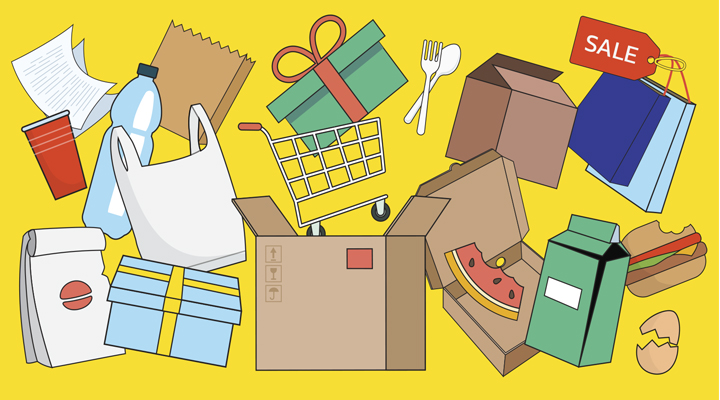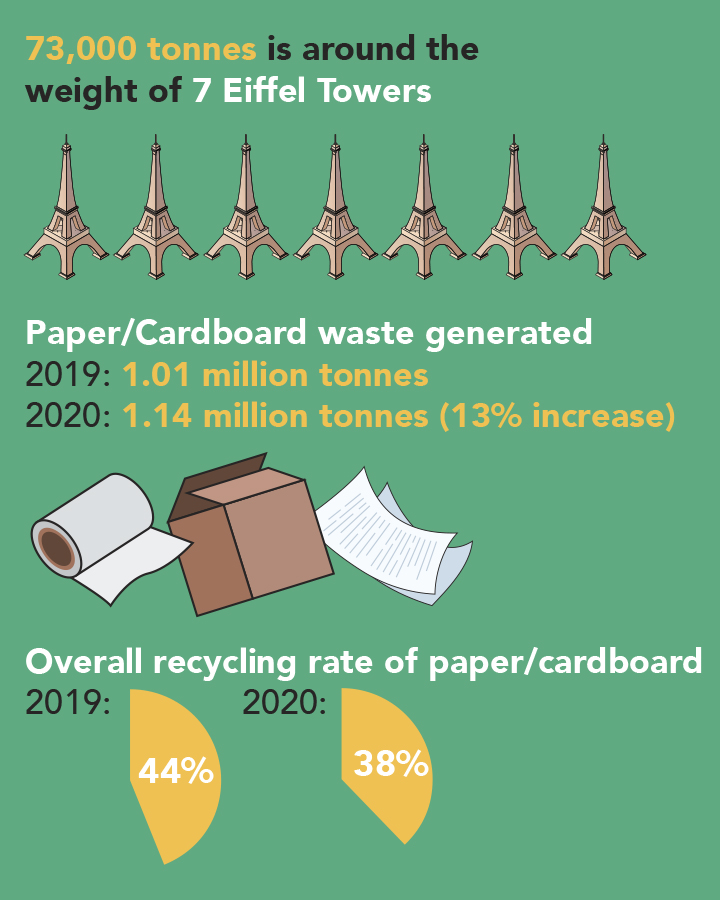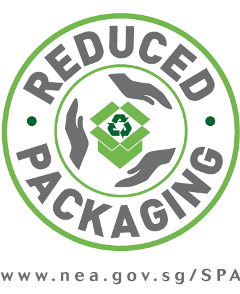How To Reduce Your Personal Packaging Waste

Singapore’s primary waste disposal solution is running short on time. The country’s only landfill site on Semakau Island is expected to be completely full by 2035.
To make matters worse, Singapore saw a spike in packaging waste during the 2020 circuit breaker period, when more online deliveries and home-delivered food orders were made. According to the National Environment Agency (NEA), paper/cardboard waste was the largest waste stream in 2020.
According to the NEA, about 73,000 tonnes of waste was generated over the two-month circuit breaker in 2020 – 11% more than the 66,000 tonnes in March 2020.
|
|
Online Shopping
1. Avoid Unnecessary Purchases
The Singapore Business Review found that 4 in 5 Singaporeans are guilty of online impulse buys. Waiting a day or two before buying an item can help prevent bouts of splurging, saving lots of packaging in the process. You might even score a discount by putting off the purchase.
2. Try to Only Buy Bulky Items Online
Having larger items sent to your doorstep is understandable. However, fragile pieces like glassware and smaller items like clothes and shoes typically come with excessive packaging for protection. These smaller items can easily be picked up at physical stores with much less wrapping. As much and as safely as you can, try to visit the store in person and bring a reusable bag with you.
What the Public Service Is Doing To Reduce Waste
Public service agencies are encouraged to:
- Ensure that suppliers integrate sustainability practices into their work processes via green procurement.
- Implement recycling programmes.
- Follow this Guide for Organising Environmentally-Friendly Events.
- Hold events at locations that are certified with the Building and Construction Authority’s Green Mark.

3. Buy in Bulk
Since every online purchase requires packaging, having several items delivered at once can reduce waste generation immensely. Requesting items to be shipped together also prevents the individual packaging of items, but is only possible if items are shipped from the same warehouse or vendor.
4. Support Sustainable Businesses
Try shopping from more eco-friendly outlets that do away with single-use plastic packaging. A number of local and international businesses have begun packaging deliveries in cloth bags and recycled materials instead.
These eco-friendly enterprises include:
- Baliza Shop
- Bamboo Straw Girl
- Scoop Wholefoods
- Utama Spice
- Lush
Retail Shopping
5. Bring Your Own Bag
According to the Singapore Environment Council, Singaporeans use about 820 million plastic bags annually for supermarket shopping alone.
To combat this frightening overuse of plastic, BYO Singapore encourages consumers to bring their own tote bags, tumblers and reusable containers, and lists merchants where discounts or other rewards are offered for reusables.
Plastic-Free Methods to Line Your Bins:
Newspaper and other repurposed materials such as food delivery paper bags or boxes work just as well, especially if you can reduce your wet trash or set up a separate compost bin for food waste. Other options for collecting rubbish include reusing potato chip bags and bread bags.
6. Ditch the Plastic Wrapping
Shopping at busy supermarkets can get extremely wasteful, with plastic wrapping everywhere for safety and groceries being double-bagged for sturdiness. Muster up your inner eco-warrior and opt for these zero-waste stores instead:
- UnPackt: Singapore’s first grocery store to sell items with absolutely no packaging.
- Eco-le: Another package-free store that offers a variety of goods ranging from spices to toiletries.
- The Social Space: A socially conscious multi-concept store that includes a cafe, a nail salon and an event space.
|
|
Food Deliveries
7. Support Packaging-Free Restaurants
Sustainable food and beverage (F&B) outlets do more than just ban plastic straws:
- The Veggie Dojo delivers food in reusable containers that customers return after transferring the food to their own plates.
- Bollywood Veggies allows customers to return their reusable packaging on the next delivery.
- Businesses like Muuse and barePack partner with restaurants to provide reusable containers and cups to customers.
When ordering food online, indicate in the remarks to reduce packaging, especially for groceries. Avoid requesting for disposable utensils.
Plastic Free July
Find out more about the global movement and take up the challenge to go plastic-free wherever you are – at home, in the workplace or out and about.
Although reducing waste is the best course of action, here’s what you can do if you still have excess packaging.
Reuse It Around the House
Engage your creative side and have fun, especially if there are children in the household. Extra cardboard can be made into art or a playground for pets, bubble wrap can be used as stuffing for shoes and bags in storage, and plastic lids can turn into coasters or paint palettes.
Dismantle
A crucial part of the recycling process is dismantling products into different recyclable or reusable material. This also helps in the redistribution of reusable parts to other users. Learn how to properly dismantle plastic mailers here.
How To Deal With Bubble Wrap:
Bubble mailers, which are bubble wrap in paper envelopes used to protect delicate items, are a particularly problematic type of packaging. Mixed materials like this often cannot be recycled and can even slow down the recycling process by causing jams in the system.
If the wrap is too dirty or damaged to be repurposed, be sure to pop all the bubbles before disposing of it in proper trash receptacles.
For innovative ways to make the most of your bubble wrap, click here.
Drop It Off
Though the blue recycling bins in most neighbourhoods make it easier to recycle without first separating items into categories, contamination with food waste or non-recyclable material might cut down the amount that is eventually recycled.
Afraid your recycling efforts might go to waste? Several alternatives are available. Specifically for redistributing packaging, Package Pals is an online initiative that links people with used packaging material to small businesses that will accept them.
An alternative drop-off point for recycling is Tzu Chi’s Eco-Awareness Centre at Woodlands. Tzu Chi also works with various communities to set up supervised temporary recycling points at housing estate common areas.
On top of that, Reverse Vending Machines (RVMs) identify, sort and collect empty plastic bottles and aluminium cans, rewarding users with discount coupons for every 20 items deposited. These machines can be found across Singapore at any one of these locations.

To get more stories like this, subscribe to the Challenge Telegram channel.
- POSTED ON
Jul 13, 2021
- TEXT BY
Chee An Lyn
Siti Maziah Masramli
- ILLUSTRATION BY
Mushroomhead





 Tip: Look out for this Reduced Packaging logo from the NEA, awarded to products that generate less waste by companies that put in extra effort to minimise packaging waste.
Tip: Look out for this Reduced Packaging logo from the NEA, awarded to products that generate less waste by companies that put in extra effort to minimise packaging waste.





